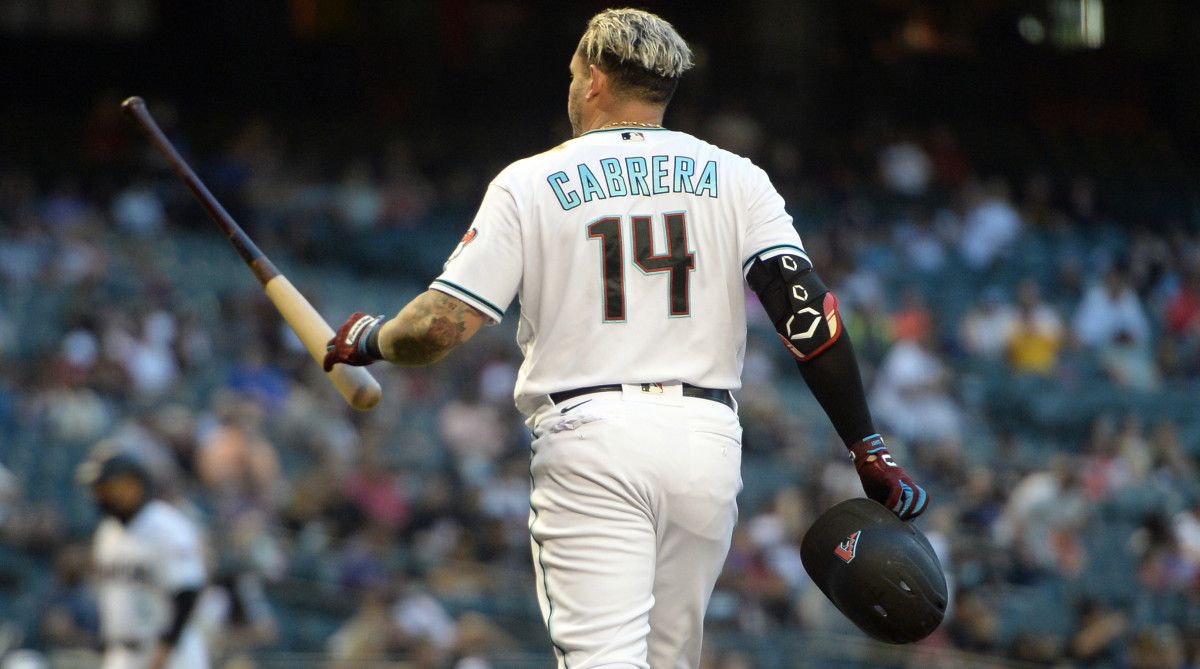How Worried Should MLB Be About the League's Offensive Struggles?

Welcome to The Opener, where every weekday morning you’ll get a fresh, topical column to start your day from one of SI.com’s MLB writers.
There have been five seasons in which baseball teams averaged fewer than eight hits per game. Three of those came at the peak of the deadball era—1907, 1908 and 1909. One came with the historically low offenses in the “Year of the Pitcher”—1968. And the final season, with the fewest hits of all, is this one—2021.
Of course, it’s only April, which makes it unreasonable to judge this number too harshly. As the season wears on, and the weather becomes warmer, offenses tend to pick up. This statistic might be radically different in a few months! With this caveat in mind, however, it’s still worth taking stock of just what teams have been doing so far this year—which is putting the ball in play less than ever before.

That shouldn’t necessarily be surprising; over the last two decades, batting averages has been dropping, while strikeouts have been spiking. But the way these trends have accelerated this year is notable. As broadcaster Boog Sciambi pointed out earlier this week on Twitter, the current league batting average would qualify as the lowest in history, and other relevant statistics here are equally dramatic. Home runs have fallen—likely due in part to the new baseball—but strikeouts are up by so much that the three true outcomes now make up a record percentage of plate appearances. (That would be 36.5%, whereas a decade ago, that figure had never crossed 30%.) Teams are averaging more than a strikeout per inning for the first time ever. And if you set aside strikeouts to focus just on when hitters do make contact—it’s now rarer for that contact to turn into hits, with a year-over-year decrease in hard-hit percentage, and the lowest BABIP since 1989.
MLB slash into today 232/310/390...BA would be lowest ever...in 2008 about 42% of swings put balls in play, this year 35.4%. In 08 the swing/miss % was 20% and this year it is 27.3%. Yikes.
— Jon Sciambi (@GoGala__Games) April 26, 2021
Again—these numbers will likely change as the season passes. (The beginning of last year saw a similar dip in BABIP, which contributed to some notably low offensive production, but that partially rectified itself as the season wore on.) Yet the fact that offenses look like this at all is still remarkable. While bats typically take some time to warm up in the spring, they’re never this cold, and it’s fair to be worried about what that means for the overall health of the sport. For all the recent focus on pace of play, this feels like a far, far more existential issue for baseball—not how quickly the game moves but what kind of action it produces.
Yet if this feels like a problem to be solved, there’s no single cause, and so it’s difficult to identify a single solution. Some of these offensive struggles are the product of increasingly talented pitching. Some are the product of an increasing emphasis on defensive positioning. (Here’s an eye-popping figure: 20% of plate appearances involved a shift or otherwise strategically positioned infield in 2015. A full 40% of plate appearances get the same treatment in 2021.) And some of the most extreme numbers right now might simply be the product of spring weirdness that fades as the calendar turns to summer.
But if it sticks around? The league installed serious changes after the only other seasons with such sluggish offenses. After 1908, it started to consider a livelier, cork-centered baseball. After 1968, it lowered the mound and shrank the strike zone. After 2021…. well, there are plenty of potential changes under consideration, including those being tested this year in the Atlantic League, such as moving the mound back. And if these numbers persist—with the ball currently being put in play less than 1908 or 1968—it’s hard to imagine that there won’t be something.
Quick Hits
- If you feel like you have been waiting for Vlad Guerrero Jr.—enjoying him as an above-average hitter, sure, but waiting for him to look like the prodigious slugger that baseball was originally promised—you might be done waiting. The 22-year-old’s red-hot start to the season got even more impressive with a three (three!) home-run game on Wednesday. (No, his dad never managed to do that, and yes, he’s very proud.)
MLB slash into today 232/310/390...BA would be lowest ever...in 2008 about 42% of swings put balls in play, this year 35.4%. In 08 the swing/miss % was 20% and this year it is 27.3%. Yikes.
— Jon Sciambi (@GoGala__Games) April 26, 2021
- Minnesota continued its recent habit of ugly losses with a 7–4 loss to Cleveland. This one unraveled with a disastrous eighth inning from reliever Alex Colomé—who walked the bases loaded and then walked in a run. The Twins, despite their talented roster, have the worst record in baseball. Yikes.
- Nolan Arenado is not of this world. (But you already knew that, right?)
We. Are. Speechless.#NolanBeingNolan pic.twitter.com/QYfju6sMfV
— St. Louis Cardinals (@Cardinals) April 28, 2021
- Hold your reports on the death of pitchers hitting for now: MLB got its first pitcher home run of the season from Adrian Houser. (The Brewers beat the Marlins by a score of 5-4.)
Someone get that ball!
— Milwaukee Brewers (@Brewers) April 28, 2021
Houser's first career home run ball ties the game.@AdrianHouser12 | #ThisIsMyCrew pic.twitter.com/6Bw5STcoca
More MLB Coverage:
